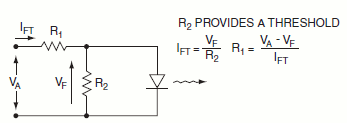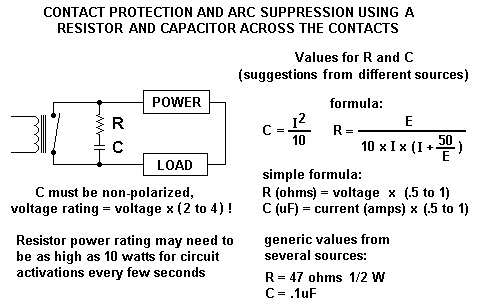EMC Basics #5: I/O as critical circuits article gives some useful tips on the EMC issues related to inputs and outputs.
Digital inputs/outputs — The key concern for digital interfaces is ESD. A secondary concern is radiated emissions. Radiated susceptibility is rare with digital I/O, although possible at very high RF levels. The solutions for both radiated problems include filtering at the interface and/or or shielding of external cables.
Analog inputs/outputs — The key concern for analog interfaces is RF. High RF levels can cause rectification in the I/O circuits causing errors and/or noise. Typical solutions include high frequency filters and/or shielding of the external cables.
Relay outputs — Since relay drivers are usually digital, the regular digital concerns apply. In addition, inductive transients from the relay coils may pose a self-compatibility problem. Snubber circuits may be needed at either the relay (best) or at the driving circuit on the boards.
Contact inputs — Since the receiving circuits are usually digital, the regular digital concerns apply.
When designing or reviewing circuit boards for EMI, ALL of the I/O circuits deserve EMI attention!
I have some additions to those suggestions:
Opto-isolators (also known as optocouplers) work to protect the receiving system at the expense of the sending system needing to drive the cables/interconnects. They are a great way to isolate digital from power circuits but have limited bandwidths. Fairchild Application Note AN-3001 Optocoupler Input Drive Circuits gives some implementation tips for optocoupler based input circuits.
Using a balanced line interface for sensitive and/or fast signal is a very good idea. Using balanced interface reduces EMI pickup and radiated EMI considerably compared to single-ended signals. Applications like telephone lines, analogue instrumentation, professional audio signals, fast serial bus standards and Ethernet all use balanced interfaces to get good noise performance.
Be careful on the grounding of cable shield when they enter the cabinet. The cable shields should be grounded at the point where they enter the metal cabinet. This will stop the RFI from entering inside the device. This advice applies especially to sensitive analogue circuits like audio interfaces. Proper grounding is essential in keeping RFI and ground loop noise away.
In many power controlling applications you can’t beat a relay for isolation or low on-resistance, as well as low cost. For relay outputs you need to carefully consider the need for snubber circuits. When talking about snubber circuits there are two kind of applications for them: Snubber cuircuit in parallel with the relay coil and snubber circuits in parallel with the relay output.
For the relay coil driven with DC voltage at known polarity an inexpensive diode in parallel with the coil works well. If the relay is switched with AC, the DC polarity is not known or you need very fast operation (parallel diode can slow down relay release time).
You need to consider snubber circuit also at the relay contact side especially if you are switching anything that is even slightly inductive. Relay contacts can arch. The end result of Contact Arc Phenomenon is shortened contact life. In addition to that arching causes lots of electromagnetic interference.
Relay Contact Life article tells that perhaps the most popular method of quenching an arc between separating contacts is with an R-C network placed directly across the contacts. Contact Protection and Arc Suppression Methods for Mechanical Relays gives information how to design a suitable R-C network for quenching an arc.
Some relay users connect a diode across the inductive load to prevent counter-voltage from reaching the contacts. In some application zener diodes are used. The MOV performs in a manner similar to back-to-back zener diodes, and can be used in both AC and DC circuits.
An added benefit of arc suppression is the minimization of EMI. An unsuppressed arc between contacts is an excellent noise generator. Arc may radiate energy across a wide spectrum of frequencies. By suppressing the arc, electromagnetic interference is held to a minimum. By quenching the arc quickly, this action is held to a minimum. The result often is a considerably lessened amount of electromagnetic and radio frequency interference. Contact arc noise can be troublesome to sensitive components in a circuit. In worst-case conditions, EMI can cause unwanted turn-on of IC logic gates, SCRs, and triacs, and can cause damage to other semiconductor devices.


216 Comments
Tomi Engdahl says:
https://www.ti.com/technologies/isolation.html?HQS=null-null-hv-hvisolation_isolation-asset-pp-electronicdesign_psfi_isolation_l1-wwe_awr&DCM=yes&dclid=CKbTt8-iz4ADFTTbOwIduogFXQ
Tomi Engdahl says:
Is This the End for the Optocoupler in High-Voltage Isolation?
Sept. 19, 2023
Learn more about TI’s new family of opto-emulators and how they differ from traditional optocouplers.
https://www.electronicdesign.com/technologies/power/article/21273990/electronic-design-is-this-the-end-for-the-optocoupler-in-highvoltage-isolation?utm_source=EG+ED+Auto+Electronics&utm_medium=email&utm_campaign=CPS231006018&o_eid=7211D2691390C9R&rdx.identpull=omeda|7211D2691390C9R&oly_enc_id=7211D2691390C9R
What you’ll learn
The importance of signal isolation in high-voltage design
The difference between optocouplers and opto-emulators
Details on TI’s silicon dioxide (SiO2) isolation technology
Isolation is invaluable in everything from industrial motor drives on factory floors to electric-vehicle (EV) traction inverters, where it’s necessary to deter dangerous high voltages from entering the more fragile parts of the system.
Optocouplers have been the “go-to” for isolating analog and high-speed digital signals traveling through power supplies and systems for decades, enhancing reliability and safety in the process, said Tsedeniya Abraham, VP and GM of interface products at TI. She added that while they can facilitate the safe transfer of signals and data from the input stage in a power supply and its output terminals or load, the optocoupler is no longer cutting it as power levels rise in the automotive and industrial sectors.
TI is trying to bring the optocoupler into the future with a new family of what it calls “opto-emulators.” Based on its silicon-dioxide (SiO2) isolation technology, the parts are pin-to-pin alternatives to optocouplers for high-voltage signal isolation. And the company claims they bring better power efficiency, signal integrity, and reliability to the table while extending the lifespan of high-voltage industrial and automotive systems.
Tomi Engdahl says:
https://www.digikey.com/en/videos/o/omron-electronics-emc-div/mos-fet-relays-introduction-episode-1?dclid=CjkKEQjwmZejBhC2teWQqdvv8NEBEiQAtG2Wl-GekB9i15Psu1LBVQVo_TZ9xqCrl4ILsXAOMcWKkLzw_wcB
Tomi Engdahl says:
Opto-emulators explained: Why you should upgrade your optocoupler technology
https://e2e.ti.com/blogs_/b/analogwire/posts/opto_2d00_emulators-explained-why-you-should-upgrade-your-optocoupler-technology?HQS=asc-mdbu-catan-anahub_isom8x-agg-ta-electronicdesign_ana-wwe_int&DCM=yes&dclid=CJPqxpLVi4IDFZOMmwodzuAPyw
Optocouplers, also known as photocouplers, opto-isolators and optical isolators, have long been an option for designers seeking galvanic isolation for their system signals. Around since the 1970s, these semiconductor devices have played an important role in providing safety isolation for industrial and automotive end equipment. However, despite significant advancements, there appears to be a limitation to their progress in electrical characteristics, high-voltage reliability and integration capabilities, prompting designers to explore alternatives.
Technologies such as capacitive and magnetic isolation have emerged as alternatives, offering better overall performance compared to optocouplers. Texas Instruments (TI) has invested in silicon dioxide (SiO2)-based digital isolation technology since the early 2000s, providing digital isolator products that offer the same functionality as optocouplers with some distinct advantages.
Tomi Engdahl says:
Submitting a new device for electromagnetic compatibility (EMC) testing seems a little like showing up for the final exam after skipping all the lectures. You might get lucky and pass, but it really would have been smarter to take a few of the quizzes to see how things were going during the semester. Similarly, it would be nice to know you’re not making any boneheaded mistakes early in the design process, which is what……
HOMEBREW TEM CELL LETS YOU EMC TEST YOUR OWN DEVICES
https://hackaday.com/2023/11/02/homebrew-tem-cell-lets-you-emc-test-your-own-devices/?fbclid=IwAR17xB0vOKsk-MbNtwckAkHmGF4w7Z4E8AfDqtwor7GeN9gEyIUOWkCP3As
Tomi Engdahl says:
https://components.omron.com/eu-en/products/basic-knowledge/relays/technology
Tomi Engdahl says:
https://sound-au.com/articles/mosfet-relay.htm
Tomi Engdahl says:
Measuring Pick Up & Drop Out Voltage Of Relays
https://na.industrial.panasonic.com/blog/measuring-pick-drop-out-voltage-relays
Tomi Engdahl says:
https://forum.digikey.com/t/the-relay-operating-voltage-is-max-the-release-voltage-is-or-higher-what-is-the-difference/33833
Tomi Engdahl says:
https://relaysbc.sourceforge.net/relays.html
Tomi Engdahl says:
https://etn.fi/index.php/tekniset-artikkelit/17274-optinen-rele-korvaa-mekaanisen-testauksessa
Tomi Engdahl says:
Opto-TRIACs are used to control power TRIACs while ensuring electrical isolation. Solid State Relays (SSR) are constructed using these opto-TRIACs.
There are two types of opto-TRIACs, and so the SSRs, each with distinct advantages and disadvantages.
Random phase opto-TRIACs activate the main TRIAC immediately upon receiving a control signal. In contrast, zero-crossing opto-TRIACs, which include a built-in zero-crossing detector, only trigger the main TRIAC when the AC voltage is close to zero.
The zero-crossing opto-TRIACs help reduce inrush current and minimize EMI without requiring additional circuitry. However, their application is limited to resistive and low-inductive loads, primarily for on-off control, as they are not suitable for PWM dimmers or motor speed control. Zero crossing opto-triacs are also unsuitable for high-inductive loads due to the phase lag between voltage and current.
On the other hand, random phase opto-TRIACs are suitbale for phase control applications, such as dimmers and motor speed controllers. It is also compatible with both resistive and inductive loads. An additional circuit, such as a snubber required to minimize EMIs.
#electronics #circuits
Tomi Engdahl says:
How To Test a Relay (and How Relays Work) – in 8 minutes
https://www.youtube.com/watch?v=snV2eZb8FoE
Explaining How relays work and How to test them. Every car has relays, but why? what do they do? and how can we check if a relay is bad? Understanding relays’ purpose and operating principles is an important step in being able to diagnose various electrical problems. (relay testing made easy)
Timestamps:
0:00 intro
0:15 what is a relay
0:30 why we need relays
2:27 how relays work
3:44 how to test relays
7:05 fastest way to check a relay
7:22 check relay circuit basics
Tomi Engdahl says:
How To Test and Diagnose Relays and Wiring [4 & 5 Pin]
https://www.youtube.com/watch?v=S-DwV0HLsE4
Tomi Engdahl says:
Relay Wiring Explained (3, 4, 5 & 8 Pin) | Car Fix
https://www.youtube.com/watch?v=ZdjQWZs9Omk
A relay is an electromechanical switch used to control a high-current circuit with a low-current signal. It acts as a bridge between a control circuit and the component it powers — like headlights, fans, fuel pumps, etc.
Relay Pin Types Explained
3-Pin Relay
4-Pin Relay (Most Common)
5-Pin Relay (SPDT – Single Pole Double Throw)
8-Pin Relay
Tomi Engdahl says:
How to test a Relay
https://www.youtube.com/watch?v=BgiqWfsHdfw
Explained on automotive air conditioning relay for comprressor magnetic clutch